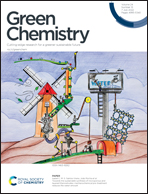Systematic QSAR and iQCCR modelling of fused/non-fused aromatic hydrocarbons (FNFAHs) carcinogenicity to rodents: reducing unnecessary chemical synthesis and animal testing†
Abstract
Carcinogenicity of chemicals is a highly concerning toxicological endpoint closely associated with human health. To implement the 3R principles of animal studies in the background of green and sustainable chemistry, for the first time, we systematically performed the quantitative structure–activity relationship (QSAR) modelling of the carcinogenicity of fused/non-fused aromatic hydrocarbons (FNFAHs) to rodents according to stringent OECD guidelines, in which different species, sexes and interspecies relationships were considered. Six new carcinogenicity datasets of FNFAHs based on the target organ liver were extracted from the Carcinogenic Potency Database (CPDB). Finally, six carcinogenic QSAR prediction models (female/male rat, female/male mouse, rat and mouse) and two interspecies quantitative carcinogenicity–carcinogenicity relationship (iQCCR) models were developed. All models were evaluated by state-of-the-art validation metrics. The predictive performance of QSAR models was proved by encouraging statistical parameters like Rtest2 = 0.7102–0.9561, QFn2 = 0.6255–0.9263, and CCCtest = 0.7757–0.9547. Similarly, two iQCCR models also showed high-quality predictive performance (Rtest2 = 0.7446–0.7990, QFn2 = 0.7119–0.9103, and CCCtest = 0.8305–0.8815). Mechanistic interpretation identified the detailed relationship between structural information and each carcinogenicity endpoint. Particularly, all developed models were employed to predict the carcinogenic potency of hundreds of unknown external compounds without experimental values. The priority ranking of these untested FNFAHs against different carcinogenic endpoints was also made, which can provide important information for regulatory policy making. In summary, the models constructed here can be utilized for predicting the carcinogenic potency of new or untested FNFAHs for regulatory purposes, thus reducing unnecessary chemical synthesis and animal testing.



 Please wait while we load your content...
Please wait while we load your content...